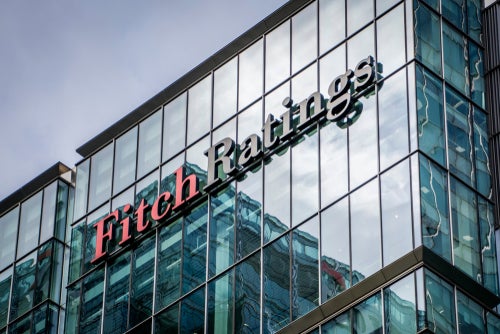
Construction is regularly identified as one of the slowest business sectors in financial crisis Europe, but, as Peter Johnstone discovers, asset finance continues to feed investment appetite.
Construction asset finance is recovering slowly but surely, due to a gradual upturn in the building sector, combined with the continuing reluctance of banks to fund capital expenditure.
Business is still sluggish following the global financial crisis, but default rates remain very low and there is hope in sight as lessors expect a recovering economy to increase demand for lending in the future.
Caterpillar Financial Services (Cat), the captive finance arm of Caterpillar Inc, has seen its book grow every year since 2010, quite soon after the initial impact of the recession, according to sales and marketing manager Richard Kinsey.
"There is a challenge out there for customers; a lot of the banks have got access to the Funding for Lending scheme and government-supported schemes, which we don’t," says Kinsey.
"But they are still not lending, whereas we are seeing our lending book grow. We are pretty positive; year-on-year our financing volume is growing".
How well do you really know your competitors?
Access the most comprehensive Company Profiles on the market, powered by GlobalData. Save hours of research. Gain competitive edge.

Thank you!
Your download email will arrive shortly
Not ready to buy yet? Download a free sample
We are confident about the unique quality of our Company Profiles. However, we want you to make the most beneficial decision for your business, so we offer a free sample that you can download by submitting the below form
By GlobalDataMartin Nixon, head of asset finance at United Trust Bank (UTB), is slightly less optimistic.
While he believes things are not getting worse, he says business still seems to be "bumping along the bottom", while people try to talk it up, and although there are hopes of a slow improvement, he "can’t see it picking up to any great degree."
Mixed messages
Tarun Mistry, a partner in Grant Thornton’s leasing and consumer finance advisory services, says the firm is currently receiving "mixed messages", but adds sentiment is "certainly better than has been seen in recent years."
All three believe asset finance is holding up well in the sector due to lessors’ continued willingness to lend during the crisis.
This willingness was in stark contrast to traditional bank lenders, who sought to increase their liquidity after 2008 by retaining cash rather than extending credit.
Kinsey says that Cat’s financial business in the UK has developed "because there is less access to other finance options out there", and, as a result, ever since the financial crisis the company has seen its market share grow.
Mistry points out the Finance & Leasing Association has reported increasing penetration in the UK’s fixed-capital expenditure, giving leasing a good share of the UK market which "brings it back to where leasing was before the global financial crisis."
He also believes leasing has demonstrable benefits in funding the construction sector: "As far as plant and machinery assets are concerned, leasing is ideally placed to finance those assets as a funding product, because of its ability to spread the cost of the asset over its useful economic life," he says.
"With plant and machinery, specifically for the construction industry, there are specific lessors that target this kind of market and they know their assets, they know their suppliers, and they know their customers well."
Mistry still sees "appetite" in the construction sector for financing capital expenditure through leasing, and Nixon and Kinsey are also expecting demand to continue.
Nixon says no one is expecting "great things" and says instead it is more a case of "slow progress".
However, he adds, in reference to the recent UK government pledge to boost capital spending over the next decade, with £3bn (3.5bn) a year to be spent on infrastructure from 2015-16, "the alleged boost from central government clearly is going to help, certainly on the bigger projects."
"We are hoping that the economy will start to move, albeit slowly. As long as we see some growth that’s going to have a knock-on effect," he says.
Kinsey adds that while companies "have had challenges with managing cash… all have a similar focus on maximising cash in their business."
Cash management concerns are "a key driver" for Cat’s customers, but the company is "fairly positive" about the future, although "it all depends, for the general finance world, on what happens in Europe, the debt situation and the general liquidity situation."
"For us, there is a level of uncertainty out there, but we are positive that we’ll continue to grow."
Nixon remains more cautious, saying that increased project spending now, including budget announcements on increased infrastructure and housing building, may help, but will still have a long lead-in time.
"It’s alright announcing these things", he says, "but by the time they are hitting the ground, and work is there for contractors, it’ll be a long lead-in time. I’m sure it’ll do some good as the year goes on, but I’m not expecting an immediate rush."
As well as growing appetite from construction companies, there is still enthusiasm for construction asset leasing among lessors.
Easy reuse
Mistry points out that "as a general rule the assets that tend to favour well are the ones that have a general use."
A lot of general construction equipment, such as excavators and cranes, also have applications in other fields, he says: "they are not very specialist in what they do or the way they can be utilised", so they "can easily be reused in a different operation or by a different company, and can also be utilised or sold abroad.
"Those are the kind of assets that generally favour well with lessors," he says.
Nixon backs this up, and says UTB, especially as a small lessor, is happy to focus on standard asset classes without looking to branch out and specialise too much.
The bank sticks to "fairly standard assets", he says, "very bog-standard – excavators, dumpers, telehandlers, mobile cranes."
"There’s been no pattern in terms of particular types of equipment where we’ve had problems. I just think you need to be careful that when you’re funding equipment it’s not too specialist, so that if you’ve got a problem with it, you have a ready market for it.
"For instance, we don’t do much on piling equipment and tower cranes, because they are very specialist markets and you can catch a cold if you’re not careful."
As well as focusing on easily reusable core assets, construction equipment lessors are buoyed by default rates which Mistry describes as "much lower than one ought to expect from this point in the economic cycle".
He attributes this low rate to three main factors. First, borrowers recognising the importance of good credit, and so ensuring prompt payment in order to guarantee continued credit lines and "keep funders on side when times are tougher."
Secondly, he describes a "level of forbearance" on the part of lenders, who work together with clients when they "get into difficulty".
Finally, on a slightly less positive note, he says lessors may well be taking "a stricter view" when approving credit in the first place, which may not boost new business volumes, but will help to reduce bad debt, as companies try to utilise their available capital "in the most efficient way".
Nixon supports this, saying UTB’s default rates are "probably at historically low levels", with the company’s book "as clean as a book could be". He puts this down to talking to customers and listening to feedback from brokers, as well as "talking through any problems."
He says: "Each one has its own story to tell and you have to make a judgement as to the best way forward. But so long as you keep an open dialogue with customers there is normally a sensible route, an exit route".
Currently, he says, default is not necessarily the fault of the lessee, but can be due to problems further up the supply chain.
"If the main contractor is a little slow paying that can have a knock-on effect", and if that’s genuinely the case then it’s something you have to work on with the customer.
"When times are hard you get the main contractors squeezing out their invoice payments from 60 to 90 days – those sorts of things – which can have a big effect on the little men at the bottom of the chain."
A question of confidence
Nixon is still confident that things will pick up, saying it’s all just a case of confidence.
"When you’re being bombarded with bad news on your TV screen, it doesn’t help. It’s very much having the confidence to invest; it’s the same story really."
"There are levels of confidence there, I think people are thinking that things have certainly bottomed out and are certainly starting to improve, but we are all frustrated by the pace of that improvement really."
Kinsey thinks growth depends to some extent on "significant projects" being released. Currently, he says, "there is a couple out there, in terms of major power generation and infrastructure projects like that", but he feels that it is too soon to comment.
Mistry echoes Nixon, placing the emphasis on confidence: "The real major factor will be the overall optimism within the market, and overall growth as far as GDP’s concerned, and associated capital expenditure. They are the key things that are going to drive the demand for leasing, going forward," he says.
This view sums up the attitude of many, right now, who feel they are going through "a level of stabilisation", and any reduction in growth or any lack of stability might affect asset values again and may affect appetite within the leasing industry.
Overall, lessors are putting on a brave face and remaining optimistic, but they don’t want to commit, or appear overconfident, because, as Mistry points out, "it’s still tentative".







